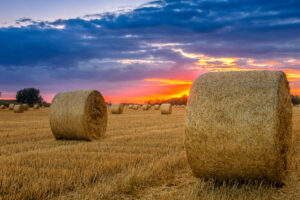There are many challenges that farmers face on a daily basis in order to feed a growing global population. In order to stay ahead of the game, farmers, biologist, environmentalists and other professionals are working together to develop the latest in agricultural technology.
Farms today are operating very differently compared to even 20 years ago. Thanks to advances like robotic systems and the use of sensors and GPS technology on their cropland, farmers can be more efficient and profitable. We’ve broken down some of our favorite recent technological advances in agriculture.
- Drought resistant plants. Genetically modified traits have been inserted into drought hybrid plants like corn, rice and wheat. This enables the plants to survive in low water and high heat conditions.
- Higher-speed internet services. Advanced services like the 4G network on portable electronics supply high-speed internet services to rural areas. Launching a satellite for communication purposes can be expensive, so this saves money.
- Robotic vehicles. Robotic vehicles like John Deere’s robotic prototype tractor can be controlled remotely or operated autonomously through enhanced software. They can detect obstacles and will find an alternate route. This type of technology continues to achieve breakthroughs every day.
- Precision technologies. Systems like the RTK navigation system makes precise seeding and fertilizer application a reality. The systems also are beginning to have the flexibility to apply multiple products at the rate you choose.
- Sensors. Smart sensors that can monitor plant health, water needs and everything in between are a hot item in agriculture. These sensors signal when the soil or plant is running low on a particular item and say how much is needed. Farmers can then apply the nutrient or water that is needed based on the finding.
These and many more innovative technological advances are creating safer foods and reducing the environmental impact of agriculture. It’s also allowing farmers to continue to put food on our tables for many years to come.
This content may not be used or reproduced in any manner whatsoever, in part or in whole, without written permission of LANDTHINK. Use of this content without permission is a violation of federal copyright law. The articles, posts, comments, opinions and information provided by LANDTHINK are for informational and research purposes only and DOES NOT substitute or coincide with the advice of an attorney, accountant, real estate broker or any other licensed real estate professional. LANDTHINK strongly advises visitors and readers to seek their own professional guidance and advice related to buying, investing in or selling real estate.










Farms today are operating very differently compared to even 20 years ago. Thanks to advances like robotic systems and the use of sensors and GPS technology on their cropland, farmers can be more efficient and profitable. We’ve broken down some of our favorite recent technological advances in agriculture. I have used this and GPS technology. This is a very good method of agricultural technology.